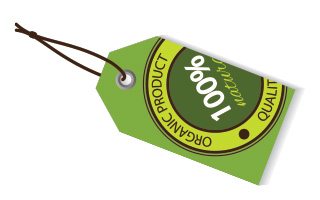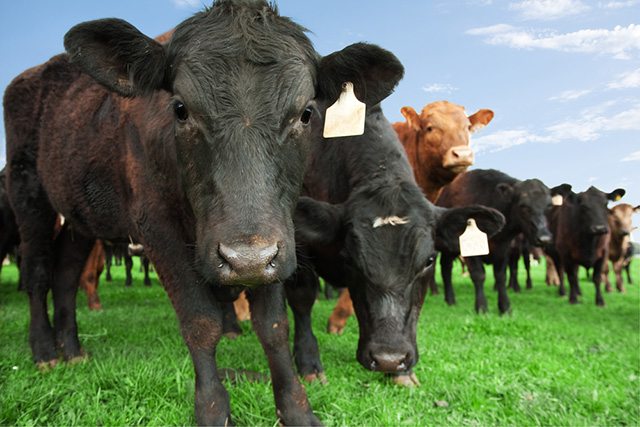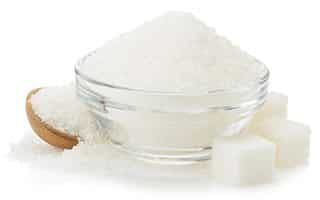Think that “grass-fed” cow was really fed grass its whole life? Are those “natural flavors” in your soda really that natural? Get up to speed on some of the most notoriously misleading terms tossed around by the food industry in an attempt to mislead and confuse the general public.
[hr]
1. “Organic”
 As soon as organic went mainstream, you can be sure that food lobbyists went to work on what is considered organic and what isn’t. It’s now something of a gray area, and you have to use your best judgment when shopping for organic foods and products.
As soon as organic went mainstream, you can be sure that food lobbyists went to work on what is considered organic and what isn’t. It’s now something of a gray area, and you have to use your best judgment when shopping for organic foods and products.
It’s a great idea to buy organic food, but you’ll want to make sure that what you’re getting is 100% organic. Many of today’s foods are labeled organic but contain ingredients that are not organic. Make sure that each ingredient that goes into the product is labeled organic.
[color-box color=”main”]The Main Takeaway: To get the USDA insignia a company needs to keep its non-organic and organic foods separate, is subjected to regular inspections, and does not use GMOs in the production of food. There are several more requirements to earn the certification, and a more complete list can be found here. Food manufacturers are not required to meet these guidelines in order to label their food organic.[/color-box]
[hr]
2. “Natural Flavors”
In most foods labeled as containing “natural flavors” there isn’t anything natural about the flavors that are going into it. Many times these natural flavors are chemicals, or items like MSG.
The term “natural” gets thrown around a lot and has basically lost all meaning, thanks to tactics like this that bend the rules on what is natural and what isn’t. When we think of natural we think of nature and things found in nature. Big Food considers “natural” a buzzword that gets people to buy and increases their bottom line.
The FDA says natural flavors are “the essential oil, oleoresin, essence or extractive, protein hydrolysate, distillate, or any product of roasting, heating or enzymolysis, which contains the flavoring constituents derived from a spice, fruit or fruit juice, vegetable or vegetable juice, edible yeast, herb, bark, bud, root, leaf or similar plant material, meat, seafood, poultry, eggs, dairy products, or fermentation products thereof.” But food manufactures are able to make the case for things like MSG and chemicals and they get approval to add these in.
[color-box color=”main”]The Main Takeaway: Why hide behind a vague and misleading term like “natural flavors” and simply list all of the ingredients that go into a food. As consumers we have the right to know what we’re eating, right down to the last chemical and additive.[/color-box]
[hr]
3. “Grass-Fed”
This one is a doozy. You buy beef labeled “grass fed” so that the cows should have eaten grass their entire life and treated pretty well by being allowed to graze sometimes. But what really happens is that if the cow was ever fed grass, even just as a calf, a manufacturer might label it grass fed.

What’s even more startling is that grass-fed does not mean organic, and these cows can be injected with growth hormones and antibiotics even if they’re fed grass throughout their lives. Check out this breakdown of the requirements for grass-fed labeling, put in place by the USDA.
[color-box color=”main”]The Main Takeaway: Grass fed by itself doesn’t mean much, unless a product has been certified by a governing body as adhering to some form of standard. Look for the USDA label to make sure that the cow received grass its entire life, and look for organic beef to insure there are no antibiotics or other drugs being passed along to you through the meat.[/color-box]
[hr]
4. “Sugar”
 Sugar cane is a naturally occurring item provided by nature and consists of a host of different vitamins and minerals. What is called sugar is not natural at all once it’s been fully processed, and is virtually devoid of anything beneficial to the body. So many foods list sugar as one of their main ingredients, but it is not sugar cane they are referring to, but processed, industrial grade sugar that acts more like a drug on the body than a food.
Sugar cane is a naturally occurring item provided by nature and consists of a host of different vitamins and minerals. What is called sugar is not natural at all once it’s been fully processed, and is virtually devoid of anything beneficial to the body. So many foods list sugar as one of their main ingredients, but it is not sugar cane they are referring to, but processed, industrial grade sugar that acts more like a drug on the body than a food.
Did you know that the reason there’s so many names for sugar is that food manufacturers don’t want sugar to be the first ingredient on the list of ingredients? If you tallied up the sugar totals from all of the ingredients labeled sugar you’d find that the number one ingredient on many foods would be sugar, which would turn away a lot of buyers.
[color-box color=”main”]The Main Takeaway: Sugar alone is bad enough for the body, but when you start branching out into its cousins like fructose and High Fructose Corn Syrup, you’re in for even more trouble. Be on the looking out all forms of sugar and look at the total number of sugar grams before purchasing.[/color-box]
[hr]
5. “Enriched”
Whenever you see the word “enriched” on a label, just remember who’s doing the enriching. Do you really want to trust the big food companies to make sure you’re getting enough riboflavin?
Your version of riboflavin and their version of riboflavin are likely two different things. Riboflavin occurs naturally in foods like almonds, eggs, and seafood. But the riboflavin used to enrich the nutrient-stripped flours of the food companies is a synthetic form of riboflavin created in a lab.
[color-box color=”main”]The Main Takeaway: Food companies are interested in their bottom line. Period. Don’t rely on them to provide you with the nutrients your body needs with oddball things like “enriched wheat flour”.[/color-box]
[hr]
6. “Spices”
Spices sounds pretty harmless, and most herbs and spices are actually really good for you, like basil, oregano, and cumin. But when “spices” shows up on a food label your best bet is to put the product down.

These “spices” are almost always going to be chemically produced, which is a far cry from what spices really are. It’s a classic example of the food industry taking a term with a positive connotation and smuggling a bunch of chemicals behind it.
According to the FDA spice should be “any aromatic vegetable substance in the whole, broken, or ground form, except for those substances which have been traditionally regarded as foods, such as onions, garlic and celery.” But food manufacturers find loopholes for just about everything, and they’re able to work within this definition using chemically derived substances.
[color-box color=”main”]The Main Takeaway: There’s no need to hide behind a vague term like “spices”. If there truly are spices in a product, list what they are.[/color-box]
[hr]
7. “Fat-Free” or “Low-Fat”
You’ll still see this carryover of the fat-free diet craze from years back. Seems like it still works as a marketing gimmick for unsuspecting consumers. Just because a product claims to be fat-free doesn’t mean it won’t make you fat.
Consider the giant bag of Twizzlers labeled “A Low Fat Food.” Does this mean you can sit and eat serving after serving and not get fat? Heck no! Not with 19 grams of sugar per serving. All of that extra sugar will turn to fat in the body. Terms like these are not regulated, since technically they’re true, but can often be misleading.
[color-box color=”main”]The Main Takeaway: Eating a fat-free diet is not the ideal, but food companies are still stuck on it because it still helps to sell food. Be sure to consider all of the ingredients in a food before deciding whether it’s healthy or not.[/color-box]
[hr]
8. “Fortified”
Just like the term “enriched” fortified makes you think about who’s doing the fortifying of your foods, and why. Why does food need to be fortified anyway, doesn’t it inherently have nutrients that are good for us?
Yes and no. Yes, an orange has very good things for the human body that it is able to absorb and use up the way it was intended to. But by the time the orange gets juiced, pasteurized, and fortified into conventionally produced orange juice, very little of what was originally there remains.
[color-box color=”main”]The Main Takeaway: Food shouldn’t need to be fortified, and you don’t want to trust a publicly traded company to do your fortifying. Fortify your own diet by eating foods that are as close to nature as possible and contain the vitamins and minerals your body craves and knows how to put to use.[/color-box]
[hr]
9. “Added”
You may see products labeled as “No Added Sugar”, “No Added Salt”, and “No Added MSG”, and think that they are low in these things, or perhaps contain none at all. But this simply means that the food already contains these substances, they just didn’t do you the disservice of adding more.
In reality there’s no need to have this label at all, because it is not conveying to the consumer anything of importance, and is misleading at the very least. By saying “No Added Sugar” what have they really told you? It may have marginally less sugar than its peers, but it still likely has lots of sugar in it.
This term is basically used to market the product, and there are no rules or regulations for it since it’s technically true.
[color-box color=”main”]The Main Takeaway: This word has one use, and it is to trick or deceive the end user. There’s no reason to make a point that something wasn’t added. Its sole intention is to create the aura that this food is good for you, or that it is low in a substance when it probably isn’t.[/color-box]




